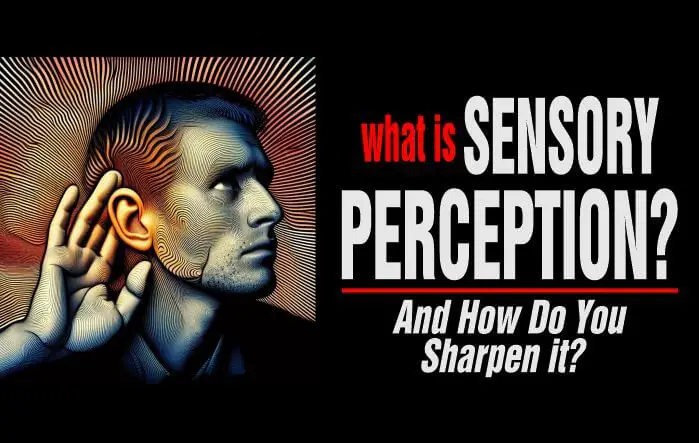Last updated on December 19th, 2024 at 10:54 pm
Enhance your decision-making, problem-solving skills, and sense of agency with sensory perception through heightened sensory awareness.
You receive sensory information every moment through your senses including touch, taste, smell, sight, and hearing.
How you receive and make use of this information sheds a bright light on your overall intelligence which in turn has a direct influence on your perception of the world around you.
Sensory intelligence is behind all of that and can be sharpened through practice and specific techniques. These and more are what we are going to be talking about in this article.
Check out this post on sensory activities for toddlers.
Table of Contents
- What is Sensory Perception?
- What is Sensory Information and Sensory Input?
- Sensory Intelligence
- Importance and Benefits of Sensory Perception in Daily Life
- How the Brain Processes Sensory Information
- Developing and Sharpening of Sensory Perception
- Sensory Perception in Different Professions
- Examples of Professions that Rely on Sensory Acuity
- Challenges of Sensory Perception and Awareness
- Frequently Asked Questions
- Conclusion
What is Sensory Perception?
Sensory Perception Definition
Also called sensory acuity or sensory awareness, refers to the process by which our sensory organs detect and interpret stimuli from the environment, such as sight, hearing, taste, smell, and touch.
It involves the brain’s interpretation of sensory information to create your perception of the world around you.
It involves the utilization of the five senses – sight, hearing, smell, touch, and taste – to gather information and make sense of the world around us.
Components of Sensory Perception
Sight: The ability to perceive and interpret visual information. This involves processes such as depth perception, color recognition, and object recognition.
Hearing: The capability to receive and comprehend auditory stimuli. It involves processing various sound frequencies, distinguishing between different sounds, and understanding speech.
Smell: The ability to detect and interpret different odors. This involves recognizing distinct smells, associating them with certain objects or situations, and discerning different levels of intensity.
Touch: The capability to perceive and interpret tactile sensations. This includes recognizing textures, temperatures, and pressure, as well as determining pain or pleasure sensations.
Taste: The capacity to identify and interpret different flavors. It involves discerning various tastes such as sweet, sour, bitter, and salty, and associating them with specific foods or beverages.
Related: Understanding Extrasensory Perception
What is Sensory Information and Sensory Input?

Sensory information or sensory input is the input your senses receive from the external world, which is then processed by your brain to create a perception and understanding of your surroundings.
It includes the data collected by your sensory organs, such as our eyes, ears, nose, tongue, and skin.
Each sense provides specific information about the environment. For example, the eyes capture visual images, the ears receive sounds, the nose detects smells, the tongue tastes flavors, and the skin senses touch, temperature, and pain.
This sensory input is transmitted as electrical signals to the brain for interpretation and integration, allowing us to form a coherent and comprehensive understanding of the world.
Sensory information is crucial for cognition, learning, and the overall experience of the world around us.
Related: Difference betweens Sensing and Intuition
Sensory Intelligence
Sensory intelligence is the ability to effectively and efficiently process sensory information and input received through your five senses.
It involves being aware of your surroundings, recognizing and understanding sensory input, and responding appropriately to it.
Individuals with high sensory intelligence are often more perceptive, attentive, and in tune with their environment.
They can pick up subtle cues, differentiate between different sensory stimuli, and use this information to make informed decisions and navigate their surroundings more skillfully.
Developing sensory intelligence can enhance your overall cognition, problem-solving, and decision-making abilities.
Related: Understanding Physical Intuition and Body Intelligence
Importance and Benefits of Sensory Perception in Daily Life
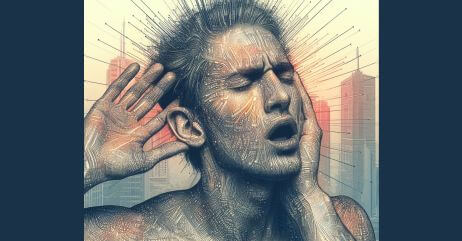
There are several benefits associated with sensory perception.
Let’s take a look:
Enhances Understanding: Sensory acuity allows you to experience and understand the world around you. Through the senses, you can gather information, perceive your surroundings, and make sense of your environment.
Ensuring Survival: Sensory perception is crucial for survival. It allows individuals to detect potential threats, such as loud noises or approaching predators, and respond accordingly.
Providing Pleasure and Enjoyment: It contributes to pleasure and enjoyment. For example, the sense of taste allows individuals to savour delicious flavours, while the sense of touch can provide comforting and pleasurable sensations.
Enhancing Memory and Learning: It plays a vital role in memory and learning processes. Sensory information helps form memories and associations, creating a stronger recollection of events or information.
Aiding in Decision-making: Sensory intelligence provides essential information needed to make decisions. For example, sensory cues like sight, touch, and smell help individuals assess the quality and value of food before consuming it.
Promoting Creativity and Imagination: Sensory perception can spark creativity and imagination. The senses can inspire artistic expression, as sensations and experiences can influence and fuel the creative process.
Improving Overall Well-being: Engaging and utilizing all the senses can enhance overall well-being. Sensory experiences, such as enjoying nature, listening to music, or appreciating art, can boost mood, reduce stress, and increase overall happiness.
Enhancing Safety and Awareness: Sensory perception heightens personal safety and awareness. For example, the sense of touch helps individuals identify potential dangers, and the sense of sight provides warning signs and cues in the environment.
Promoting Healthy Development: Sensory perception is crucial for healthy development, particularly in children. It helps them explore and understand their surroundings, develop fine and gross motor skills, and encourage cognitive and emotional growth.
How the Brain Processes Sensory Information
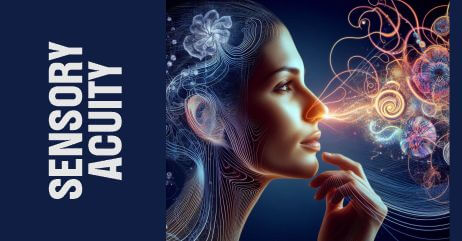
The brain processes sensory information through a complex network of neurons and brain regions.
Here is how it happens:
Sensory Receptors: Sensory information or sensory input from the environment is picked up by specialized cells called sensory receptors. These receptors are located in different parts of the body and each type responds to a specific type of sensory input such as touch, smell, taste, sound, or light.
Sensory Transduction: When a sensory receptor is activated by a stimulus, it converts the physical energy of the stimulus into electrical signals, also known as action potentials. This process is called sensory transduction.
Sensory Pathways: The electrical signals generated by the sensory receptors travel along dedicated pathways, specific to each sense, towards the brain. These pathways consist of a series of neurons that relay the signals from one region of the brain to another.
Thalamus: In most cases, sensory signals first pass through the thalamus, which acts as a relay station. The thalamus filters and sorts incoming sensory information before sending it to different areas of the cerebral cortex, the outer layer of the brain responsible for higher-level cognition.
Primary Sensory Cortices: Within the cerebral cortex, specific regions known as primary sensory cortices receive the sensory signals. For example, the primary visual cortex, located in the occipital lobe, processes visual information, while the primary auditory cortex, located in the temporal lobe, processes auditory information.
Association Areas: After being processed in the primary sensory cortices, the signals are sent to association areas located nearby. These areas integrate information from multiple sensory modalities and combine it with memories, emotions, and other cognitive processes to provide a more holistic perception of the sensory input.
Developing and Sharpening of Sensory Perception
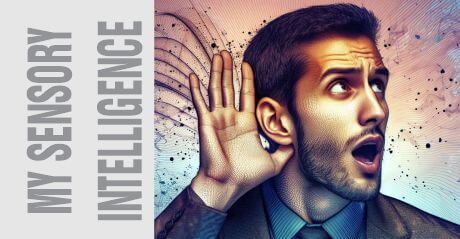
Developing sensory perception is developing the sensory intelligence to consciously and effectively use and interpret sensory information from the environment.
It involves enhancing the awareness and perception of your senses, which can lead to improved cognitive and emotional functioning.
Here are ways to achieve that:
Sensory Exercises and Activities
Sight: Visual exercises and activities like puzzles and art appreciation help to improve visual perception and recognition skills. They enhance the ability to notice details and patterns in the visual environment.
Hearing: Listening to music, recognizing different sounds, and practicing meditation can help in developing auditory attention and discernment. These activities improve the ability to effectively process and interpret auditory information.
Smell: Engaging with different scents, using aromatherapy, and participating in cooking activities can heighten olfactory awareness. These practices help in recognizing and differentiating between various smells, which can enhance memory and affect emotions.
Touch: Engaging in texture exploration, tactile activities, and sensory play aids in developing tactile perception and sensitivity. These activities improve the ability to differentiate between textures and promote sensory integration.
Taste: Trying new foods, experimenting with flavours, and practicing mindful eating can heighten taste perception. These activities allow you to explore and appreciate different tastes and textures, leading to a more sensory-rich experience during eating.
Mindfulness Practices and Sensory Awareness Techniques
Mindfulness practices involve paying deliberate attention to your present-moment experiences.
This helps in developing sensory intelligence by enhancing overall sensory awareness and focus.
Techniques such as deep breathing, body scan meditation, and sensory grounding can be used to heighten sensory experiences and improve sensory awareness.
Engaging in Sensory-rich Experiences
Participating in experiences that promote sensory stimulation, such as nature walks, art exhibitions, or cultural events, can further develop sensory intelligence.
These activities provide opportunities to engage with various sensory inputs, allowing you to practice and refine your sensory perception skills.
Sensory Perception in Different Professions

Sensory processing is essential for professionals in various fields as it enhances your ability to understand and engage with the world around you.
Here are a few ways in which sensory awareness can benefit professionals:
Improved Observation Skills: Sensory perception and awareness allow professionals to gather more detailed and meaningful information through their senses, leading to enhanced observation skills. This can be advantageous for those in fields such as law enforcement, where keen observation is necessary for detecting signs of criminal activity or gathering evidence.
Enhanced Problem-solving Abilities: Professionals with high sensory intelligence are often better equipped to analyze complex situations or challenges. By utilizing their heightened sensory processing, they can identify important details, recognize patterns, and generate innovative solutions. This can be valuable for engineers, designers, or scientists who need to solve intricate problems.
Improved Communication Skills: Sensory perception can also aid professionals in effectively communicating with others. It enables professionals to pick up on non-verbal cues, understand emotional states, and adapt their communication style accordingly. This can be especially beneficial for professionals in counseling or customer service roles.
Increased Creativity and Innovation: Sensory awareness often correlates with a heightened ability to perceive and appreciate aesthetic qualities. This can enable professionals in creative fields such as artists, writers, or musicians to generate innovative ideas and produce unique works.
Examples of Professions that Rely on Sensory Acuity
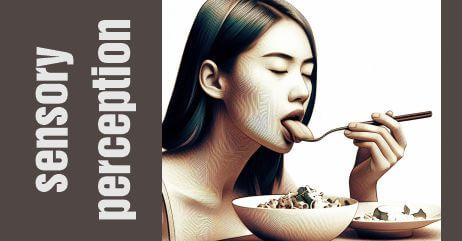
There are numerous professions that rely on sensory acuity to perform their roles effectively.
Here are a few examples:
Chefs: The ability to assess and combine different tastes, textures, and aromas to create delicious and visually appealing dishes requires a high level of sensory acuity. Chefs rely on their senses of taste, smell, touch, and even sight to determine the quality of ingredients and to craft inventive culinary creations.
Artists: Artists heavily rely on their senses to create visually captivating artwork. They need to perceive and interpret colors, shapes, textures, and proportions to produce aesthetically pleasing pieces. Additionally, artists often rely on their kinesthetic sense, or the sense of movement, to guide their brushstrokes or sculpting techniques.
Therapists: Sensory intelligence plays a crucial role in various therapy practices, such as occupational therapy, speech therapy, and sensory integration therapy. Therapists use sensory-rich activities and interventions to help individuals improve their sensory processing and integration abilities, ultimately enhancing their overall functioning and quality of life.
Challenges of Sensory Perception and Awareness
Developing sensory acuity can be challenging for some individuals. Let’s take a closer look at some of the obvious challenges that can hinder sensory intelligence:
Common Obstacles to Developing Sensory Intelligence
Sensory Processing Disorders: Some people may have difficulties in processing sensory information, leading to sensory sensitivities or sensory-seeking behaviours. These processing issues can make it harder to develop sensory perception.
Lack of Awareness: Many individuals may not be aware of the importance of sensory acuity or the impact it has on their daily lives. They may not realize that their struggles with sensory processing are hindering their overall development.
Environmental Factors: The modern environment is filled with various sensory stimuli, such as noise, bright lights, and strong smells. These overwhelming stimuli can make it challenging to focus and process sensory information effectively.
Disturbed Sensory Perception
Disturbed sensory perception is a condition where an individual experiences an altered or abnormal perception of their senses.
People with this condition may have difficulty interpreting sensory information accurately or may perceive things differently from how others perceive them.
Disturbances in sensory awareness can occur in any of the five senses.
For example, a person may experience distorted or hallucinatory visual or auditory perceptions, where they see or hear things that are not actually present.
They may also have a heightened or decreased sensitivity to certain stimuli, or they may have difficulty distinguishing between different sensations.
Disturbed sensory perception can be a symptom of various medical conditions, such as neurological disorders, mental health conditions like schizophrenia or bipolar disorder, substance abuse, or certain medications. It can also occur as a result of trauma, stress, or sensory deprivation.
Managing disturbed sensory perception often involves addressing the underlying cause or condition.
Treatment may include medication, therapy, rehabilitation, or lifestyle changes.
For individuals with severe disturbances, such as those experiencing hallucinations, medication may be necessary to help regulate their perception and reduce the intensity of symptoms.
Strategies for Overcoming Sensory Awareness Challenges
Sensory Integration Therapy: This therapy focuses on gradually exposing individuals to sensory stimuli in a controlled and therapeutic manner. It helps them to develop appropriate responses to different sensory experiences and improve their sensory intelligence.
Environmental Adaptations: Making adjustments to the environment can help you with sensory processing difficulties. For example, reducing background noise, providing comfortable seating options, or using visual schedules can create a more sensory-friendly environment.
Sensory Diet: A sensory diet involves implementing specific activities and exercises throughout the day to address sensory needs. It may include activities like brushing the skin, using fidget toys, or engaging in sensory-rich play.
Mindfulness and Self-regulation Techniques: Teaching individuals techniques for managing their own sensory experiences can be beneficial. Mindfulness exercises, deep breathing, and self-calming strategies can help individuals develop awareness and control over their sensory responses.
Seeking Professional Help if Needed: In some cases, individuals may require professional assistance to overcome sensory perception challenges. It is recommended to seek help from occupational therapists, sensory integration specialists, or other healthcare professionals who specialize in sensory processing disorders.
Frequently Asked Questions
What is sensory perception?
It refers to the ability to perceive, process, and interpret sensory information effectively, enhancing awareness, adaptability, and decision-making based on sensory input.
How does sensory perception impact daily life?
It enhances our ability to navigate and respond to our environment. It helps us make better decisions, improves communication, and enhances overall sensory experiences.
Can sensory intelligence be developed?
Yes, it can be developed through various practices such as mindfulness, sensory exercises, exposure to different stimuli, and engaging in activities that stimulate the senses.
What are some signs of high sensory acuity?
Signs of high sensory intelligence include heightened awareness of sensory details, ability to quickly adapt to sensory changes, strong intuition, and the capacity to effectively process and integrate sensory information.
What part of brain processes sensory information?
The primary sensory processing areas in the brain, such as the occipital lobe for vision and the temporal lobe for hearing, process sensory information.
Conclusion
Sensory acuity is an essential skill that allows you to effectively understand and respond to the world around you.
By honing your sensory awareness, you can enhance your ability to perceive, interpret, and use sensory information to make informed decisions and navigate daily tasks.
By practicing mindfulness and engaging in activities that stimulate your senses, such as mindfulness exercises, sensory games, or exploring nature, you can sharpen your sensory intelligence and cultivate a deeper connection with your environment.
Ultimately, improving your sensory awareness brings about heightened self-awareness, improved cognitive abilities, and a greater appreciation for the richness of your sensory experiences.
References:
- https://courses.lumenlearning.com/suny-ap1/chapter/sensory-perception/
- https://www.vedantu.com/biology/sensory-perception
- https://www.loot.co.za/product/sensory-intelligence/lvjd-558-g570
Pyo Merez (PsyD) is a distinguished adolescent and adult psychologist at the forefront of mental health advocacy.
With expertise in cognitive and developmental psychology, focusing on social relationships, cultural contexts, and individual differences, Pyo has dedicated his career to empowering adolescents and adults.
As a sought-after speaker and panelist, Pyo shares invaluable insights on issues affecting young people, contributing to a deeper understanding of mental health and well-being in today's society.

